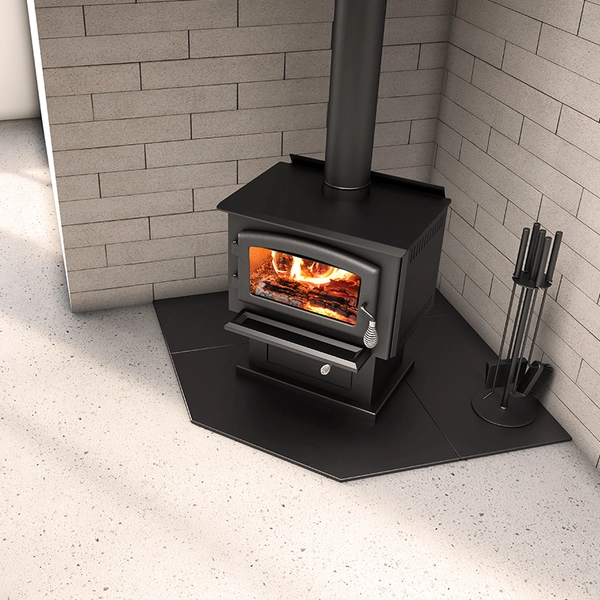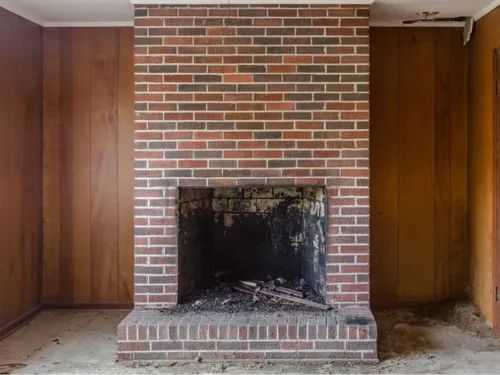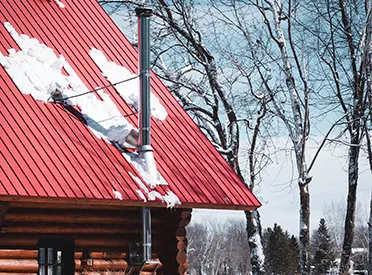
Installing a wood stove or fireplace in your home adds a warm, cozy atmosphere and offers an efficient heating solution. However, a crucial and often underestimated step is protecting the floor beneath and around your unit.
Floor protection pads or hearth boards aren’t just a nice-to-have accessory—they are a requirement for ensuring the safety of your home and complying with installation standards. Here’s everything you need to know to choose the right protection for your stove or fireplace.
Why is Floor Protection Mandatory?
A stove or fireplace generates extremely high temperatures that can damage sensitive materials like wood, vinyl, or laminate. Additionally, sparks and embers can escape the unit and cause burns—or worse, a fire.
Floor protection also shields combustible materials, which are any materials likely to ignite or burn when exposed to high heat. This includes wood, vinyl, or laminate flooring, as well as rugs, furniture, and other decorative elements that may be nearby.
A hearth pad is therefore an essential safety barrier. It not only protects your flooring from damage, but it’s also a legal requirement for a code-compliant installation under Canadian standards. While national codes such as CSA B365 apply throughout Canada, municipalities or provinces may have additional rules. It’s always best to consult your local building code and your unit’s manual.
How to Choose the Right Floor Protection?
A proper hearth pad must meet several key criteria to ensure the safety of your home:
-
Size of the Hearth Pad
The floor protector must cover the area directly beneath the unit, as well as meet clearance requirements around it. In Canada, these minimum clearances often include 18 inches in front of the appliance and 8 inches on the sides. These values can vary depending on your stove or fireplace model, so always consult the manufacturer’s manual for exact specifications. -
Material of the Hearth Pad
Only non-combustible materials can be used, such as metal, tempered glass, ceramic, brick, or cement. These materials provide effective heat protection and essential durability for your installation. -
R-Value of the Protection
Some stoves require a hearth pad with a specific R-value, which measures the material’s thermal resistance. This requirement is always specified in your appliance’s installation guide. It’s important to meet this value to ensure a compliant installation.
Clearances and Combustible Material Protection: A Top Priority
Stoves and fireplaces pose risks not only to flooring but also to nearby combustible materials. These include:
-
Wood: walls, floors, shelves, or wooden furniture
-
Fabrics: curtains, rugs, cushions, or clothing
-
Plastic: decorative items, bins, or furniture
-
Paper or cardboard: newspapers, books, or packaging
-
Composite materials: some wall panels or laminate flooring
Maintaining recommended clearances between your appliance and these materials is essential to prevent:
-
Fire hazards
-
Material degradation due to heat
-
Discomfort or damage from excessive heat
The Risks of Installing Without Floor Protection
Failing to install floor protection exposes your home to serious risks. The intense heat, combined with sparks and embers, can cause permanent burns, damage to your flooring, or even a fire.
Unprotected floors, especially those made of wood or composite materials, cannot withstand the high temperatures generated by a stove or fireplace. That’s why a hearth pad is not a luxury but a critical necessity to ensure the safety of your home.
Ensure the Safety and Compliance of Your Installation
Whether you’re installing a new stove or upgrading an existing fireplace, don’t take any chances—floor protection is mandatory. It ensures not only code compliance but also the safety and longevity of your installation.
Browse our selection of certified hearth pads to find the perfect model that combines safety, performance, and style. With MFP, you can trust that your protection is tailored to your needs and compliant with your unit’s specifications.



